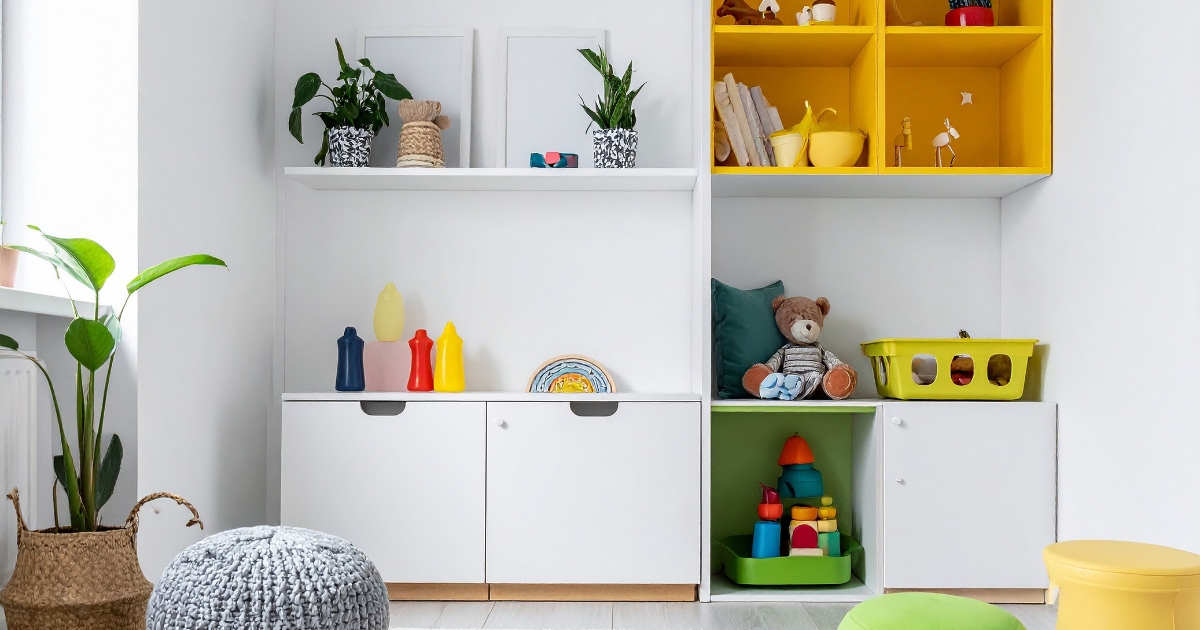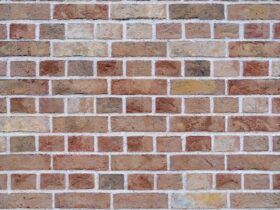Designing a child’s space is both a joy and a challenge. You want it to spark imagination and creativity—but you also need it to survive juice spills, sticky fingers, and years of changing tastes. The trick is creating interiors that feel magical for kids yet smart enough to evolve as they grow. By using flexible design principles, clever paint strategies, and a few professional touches, you can craft a home that adapts gracefully from toddler chaos to teen cool.
1. Design Principles That Stand the Test of Time
A kid-friendly home doesn’t have to scream “nursery” or “playroom.” The best spaces start with durable materials and a neutral foundation, which lets you change the mood with small tweaks instead of major overhauls.
Opt for wipeable wall finishes, easy-clean fabrics, and furniture with rounded edges. Choose a timeless color palette—think soft whites, grays, or beiges—and layer in accents like cushions, wall decals, or rugs that can easily be swapped out.
A neutral base acts like a blank canvas; it gives you freedom to adapt without starting from scratch. You can go from “cute and colorful” to “calm and cool” simply by replacing accessories or artwork. It’s interior design that grows up alongside your child.
2. Smart Use of Paint to Update, Not Re-Decorate
Kids grow fast—and so do their interests. One day they’re obsessed with dinosaurs; the next, it’s outer space or K-pop. Instead of constantly re-decorating, use paint as your secret weapon.
Painting is the simplest, most affordable way to update a room’s vibe. A fresh coat of paint on furniture or a single accent wall can make a big difference. Choose semi-gloss or satin finishes that can handle the occasional scribble and be easily wiped clean.
You can also play with two-tone walls: lighter colors above to keep the space bright, darker shades below to hide scuffs and fingerprints. It’s a small trick that keeps rooms looking tidy with minimal effort.
3. Accent Walls, Chalkboard Paint, and Magnetic Paint Magic
If you want to spark your child’s creativity without sacrificing style, consider interactive wall finishes. These special paint options combine fun and functionality in one stroke of a brush.
- Chalkboard Paint: Perfect for doodles, math practice, or leaving little notes. It encourages creativity and reduces paper waste.
- Magnetic Paint: Lets you display art, schoolwork, or photos without nails or tape. It’s ideal for evolving displays as your child’s interests change.
- Accent Walls: A bold or themed wall—such as a mountain mural or soft ombré—can add personality without overwhelming the space.
These features give kids freedom to express themselves while allowing parents to maintain a cohesive, attractive home. When they grow out of a certain style, repainting one wall is much easier than redoing the entire room.
4. Transitioning Rooms Over Time
One of the biggest mistakes parents make is designing for “right now.” Instead, plan for the future. A nursery, for example, can easily transition into a big-kid room or study area if you think ahead.
Invest in modular furniture—cribs that convert into beds, adjustable shelving, or desks that can grow in height. Stick with timeless pieces that blend in across age stages. A soft pastel room can transform into a serene teen retreat with just a new bedspread and wall color.
Lighting also plays a key role. Layer ambient lighting with task lamps and nightlights so the space can adapt from story time to homework sessions. Small swaps make a big impact without major renovation.
5. When to Bring in a Professional Painter
Even the most hands-on parents eventually reach a point where they want a polished, grown-up update. That’s when it pays to call in a professional. A skilled painter can refresh worn finishes, repair scuffs, and help you achieve a cleaner, more sophisticated look that still feels family-friendly.
For instance, Paintman NYC is a trusted pro partner many homeowners call when they’re ready to transition from kid décor to refined interiors. Whether it’s smoothing out chalkboard walls or giving a teen’s room a more mature feel, professionals bring precision and long-lasting quality you can’t always get from a DIY job.
6. Multipurpose Spaces That Evolve
Children’s rooms today often serve multiple purposes—play zone, homework hub, and chill-out corner. The key to keeping it functional is flexibility.
Use storage furniture that hides clutter but can later serve other uses: ottomans with compartments, wall-mounted shelving, or under-bed bins. Keep layouts open enough to accommodate new furniture as kids grow taller and more independent.
Deep learning might be shaping the tech world, but at home, deep planning shapes how comfortably your family grows into each space. The more you think ahead now, the less remodeling you’ll have to do later.
7. Using Color Psychology for All Ages
Colors influence mood and focus, which makes them especially important in children’s spaces. Soft blues and greens can help with relaxation, while cheerful yellows and oranges stimulate creativity. As your child matures, shift toward more muted tones—think navy, sage, or warm taupe—to create calm, cozy spaces for study and rest.
When repainting, always choose low-VOC or zero-VOC paints to ensure healthy indoor air quality. This keeps your space both stylish and safe.
8. Letting Kids Participate in Design Decisions
Involving children in design choices not only makes them feel valued but also teaches responsibility. Let them choose accent pillows, wall art, or even a color sample for their space. This helps prevent “design fatigue” later—when kids reject a look they didn’t help create.
You can compromise by offering a curated range of parent-approved options. For example, let them pick from three accent wall colors that already fit your palette. The result feels personal yet cohesive.
9. Blending Playfulness With Practicality
Children’s interiors should spark imagination without sacrificing order. Mix playful patterns—stars, animals, or geometric shapes—with practical organization systems. Use open shelves for toys and labeled bins for art supplies.
The goal is to design a space that encourages creativity while teaching tidiness. When it’s time to transition, those same systems can easily hold books, hobbies, or tech gear.
10. Bringing It All Together
Creating kid-friendly interiors that grow with your children is about balance—between whimsy and durability, fun and function, flexibility and structure. It’s not about perfection; it’s about adaptability.
By focusing on durable materials, clever paint tricks, and a long-term vision, you can create a home that matures gracefully with your family. And when the moment comes to upgrade from finger-paint walls to minimalist neutrals, remember you don’t have to do it alone—pros like Paintman NYC are just a call away to help bring your new vision to life.
Conclusion: A Home That Grows Up Gracefully
Your child’s room isn’t just a space—it’s a story in motion. Every wall, color, and furniture choice plays a part in their growth. Designing for adaptability means you’ll spend less time redoing and more time enjoying those fleeting years. With thoughtful planning, a few creative paint ideas, and the occasional professional touch, you can create interiors that feel warm, functional, and perfectly in tune with your child’s journey—from toddler to teen and beyond.







